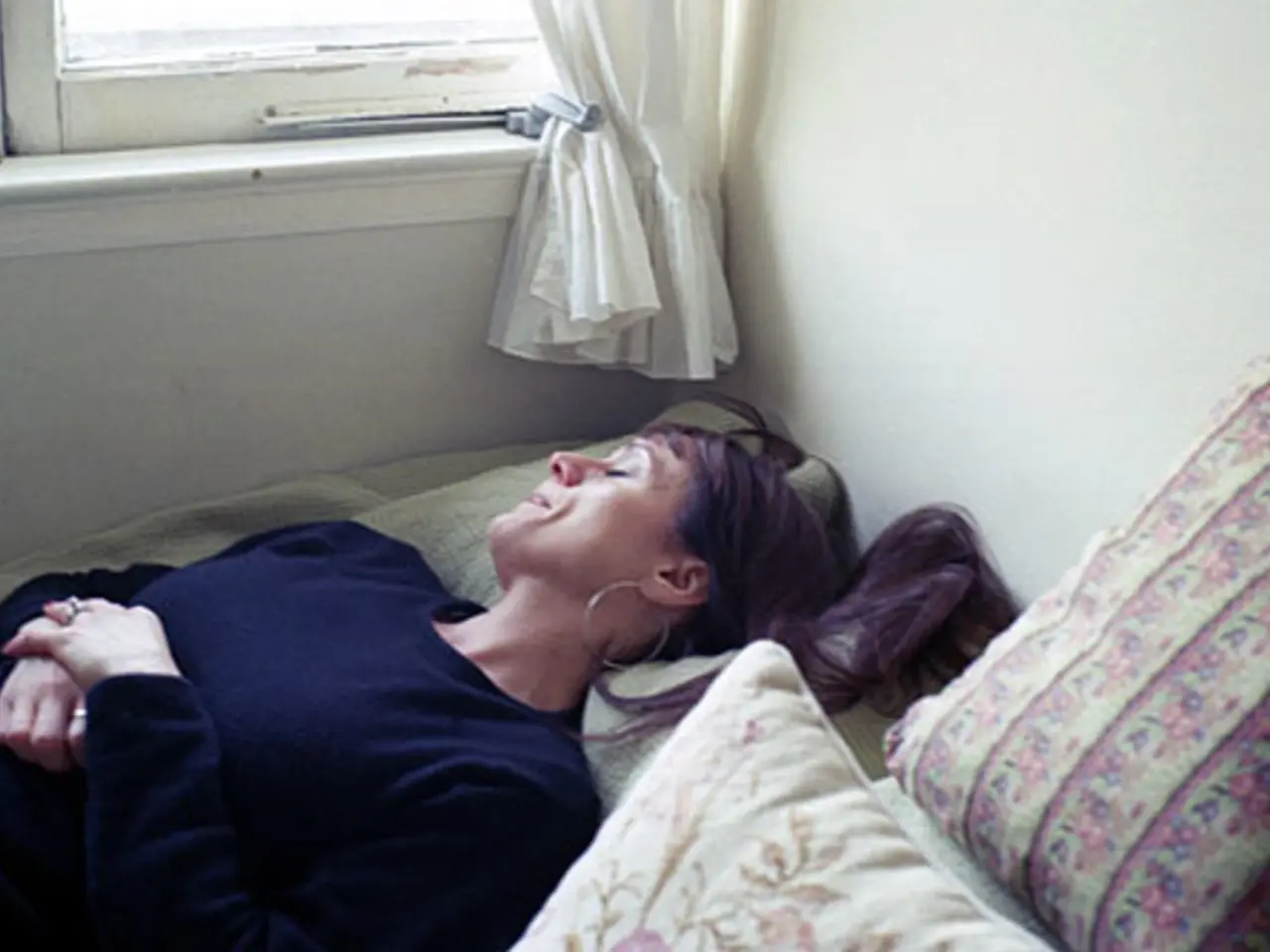Strategies for overcoming sleep disorders and enhancing nocturnal rest
In the ongoing battle against insomnia, a common sleep disorder affecting millions worldwide, adopting healthy sleep habits, stress management, and a calm bedtime routine is just the beginning. Beyond these fundamental practices, there are several additional effective strategies to help manage insomnia symptoms.
One such strategy is Cognitive Behavioral Therapy for Insomnia (CBT-I), considered the gold standard and first-line treatment for chronic insomnia. CBT-I is a structured program that helps identify and replace negative thoughts and behaviors that worsen sleep problems with habits that promote better sleep. Key components include cognitive restructuring to challenge unhelpful beliefs, stimulus control to re-associate the bed with sleep, sleep restriction therapy to limit time in bed to actual sleep time, relaxation training, sleep hygiene education, and bright light therapy.
Bright Light Therapy, another effective approach, involves exposure to bright light, especially in the morning, to help regulate the body’s internal clock and improve sleep timing. This is particularly useful for circadian rhythm disorders that can contribute to insomnia. Light therapy involves timed exposure to a bright light box or device, starting with 15-30 minute sessions and adjusting based on individual needs.
Chronotherapy, a behavioral therapy, involves gradually shifting the sleep schedule by delaying or advancing sleep time in small increments to reset the circadian rhythm, helping align sleep patterns more conventionally. This strategy is useful for sleep phase disorders impacting insomnia.
Relaxation techniques such as biofeedback, guided imagery, or progressive muscle relaxation can be learned and practiced before bedtime to reduce arousal and prepare the mind and body for sleep.
While CBT-I and behavioral therapies are preferred for long-term management, short-term or carefully monitored medication use may be considered in some cases under a physician’s guidance to manage symptoms.
In addition, maintaining a sleep-conducive environment, minimizing noise disturbances during sleep, and reducing exposure to blue light from electronic devices before bed can also contribute significantly to improving sleep quality. A comfortable mattress and pillows that provide adequate body support are essential for a good night's sleep.
Chronic pain, depression, and other comorbidities can contribute to insomnia. Seeking medical help to address the root causes is important. Prioritizing tasks, journaling, and delegating tasks to trusted individuals can also help alleviate unnecessary stress and improve sleep quality.
In conclusion, managing insomnia requires a multi-faceted approach tailored to the individual. Consulting a healthcare provider or a sleep specialist can help determine the most suitable strategies for effective insomnia management.
- Cognitive Behavioral Therapy for Insomnia (CBT-I), a structured program that helps manage insomnia symptoms, includes components like cognitive restructuring, stimulus control, sleep restriction therapy, relaxation training, sleep hygiene education, and bright light therapy.
- Bright Light Therapy, an effective approach for insomnia, involves timed exposure to a bright light box or device to help regulate the body’s internal clock and improve sleep timing.
- Chronotherapy, a behavioral therapy, can help reset the circadian rhythm by gradually shifting sleep schedule, making sleep patterns more conventionally aligned, which is useful for sleep phase disorders impacting insomnia.
- Maintaining a sleep-conducive environment, minimizing noise disturbances, reducing exposure to blue light, and using a comfortable mattress and pillows that provide adequate body support can all contribute to improving sleep quality for insomnia management.




